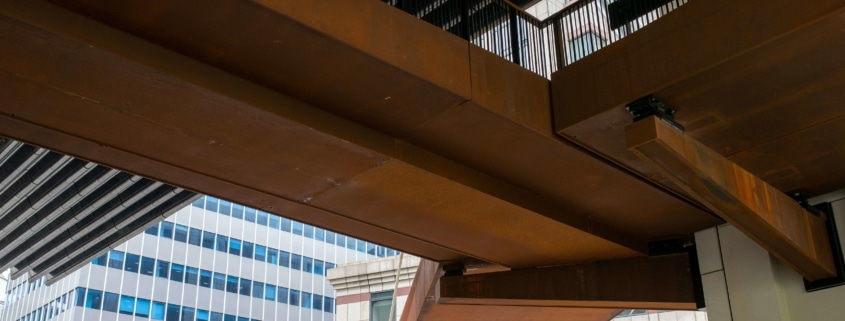In recent years, one of the growing trends in modern architecture has been the incorporation of perforated metal in construction. This is not necessarily surprising, given that perforated metal sheets can be used to enhance a building’s facade with an almost infinitely wide range of images, textures, and shapes. And although perforated metal is most often used for aesthetic and design purposes, it can frequently serve practical functions as well.
To showcase the wide range of fascinating and eye-catching uses of perforated metal in architecture, this article will showcase some noteworthy examples from building projects around the world.
1. Miami Museum Garage
There is no shortage of flashy, eye-catching sights when exploring Miami’s downtown design district. But even in this high-competition environment, the exterior of the Miami museum parking garage is an arresting sight.
While different sections of the building’s exterior have been decorated by a collection of artists, the building’s front is covered in a layer of perforated metal, presenting a beautiful, flowing facade created through the use of color and gaps in the metal. These gaps showcase specific rooms within the structure and evoke the tunnels and chambers of an ant colony.
Not only does the outer layer of metal provide a beautiful and unique face, but the metal also serves to moderate and control the amount of sun and wind that enter the parking structure, thus serving a double function, both aesthetic and practical.
2. Salesforce Transit Center
The Salesforce Transit Center in San Francisco is another large building that boldly features perforated metal panels. This massive transportation hub took 17 years to finish construction, and is surrounded by rolling, wave-shaped sheets of perforated metal. The design cut into the metal was designed by physicist and mathematician Sir Roger Penrose, who took his inspiration for the pattern from both the natural world and math itself.
3. Douyun Bookstore
Architect firm Wutopia Lab made a bold choice when, rather than demolishing two abandoned buildings, they joined the two empty spaces into a single functional bookstore by wrapping the structure in perforated aluminum. The aluminum sheet surrounding Douyun bookstore is perforated at differing sizes, creating different levels of visibility around the structure, sometimes giving partial views of the old original structures below, and overall creating a gentle, welcoming, “cloudy” look.
Where once two “unfocused” buildings eventually failed, the single uniting factor of the perforated metal gently covering the bookstore creates a clean, well-spaced interior as well as attractive outside garden and courtyard spaces that make this flagship bookstore location a destination in its own right.
4. Vancouver’s Treehouse
The looming building in West Vancouver known as the Tree House is a condo building whose exterior is made up of a combination of concrete, dark painted metal, and of course, perforated metal sheets. Similar to the Miami garage structure, these metal sheets will serve a dual function of giving the building’s exterior a more tree-like and “natural” look while also regulating the amount of sun that directly strikes the walls and windows of the building, helping to better control the temperature and levels of natural light.
These metal sheets, along with the intentionally uneven shape of the building, help it feel almost like a natural formation jutting out of the surrounding wilderness.
5. Cinema Le Grand Palais
When the french design group, Antonio Virga Architecte, set out to repurpose a space that had at different points been both a convent and a military base, their goal was to make a movie theater that was built from modern design sensibilities while still evoking the grand, monumental movie theaters of the past.
The Cinema Le Grand Palais does this with two main building structures – one a simple but elegant white marble rectangle that matches the dimensions of the nearby centuries-old homes, the other half covered in a “false” extension of a brilliant gold perforated metal sheet. The overall design is founded in the architectural history of the area while still presenting a magnificent and opulent facade and still provides a practical use as light spilling from within the large golden box helps to illuminate the surrounding square.
The Sky’s the Limit
There can be no doubt that the use of perforated metal sheets in architecture around the globe is on the rise, and the reasons for this trend are equally clear. That’s why, if you are starting or planning a new construction project, there has never been a better time to contact MetalTech Global to help bring your artistic vision to life.
As the nation’s single premier manufacturer and distributor of zinc sheets and coils. Zinc sheet is a hugely flexible metal, both physically and metaphorically, capable of being molded into nearly any shape and displaying any image through careful perforation. Take advantage of our services now to find out how we can help you realize your next construction dream.



